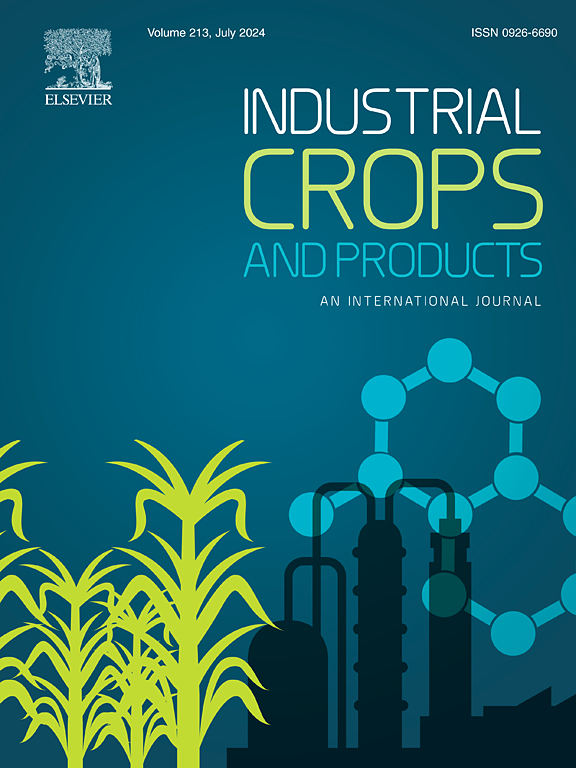基于成分的菠萝叶纤维细度和拉伸强度快速预测模型
IF 5.6
1区 农林科学
Q1 AGRICULTURAL ENGINEERING
引用次数: 0
摘要
菠萝叶纤维(palf)是一种具有特殊韧性的可持续资源,但其成分-结构-性能关系仍未得到充分研究,限制了其高价值应用。本研究建立了单个palf的化学成分(纤维素、半纤维素、木质素)与力学性能之间的定量联系,旨在建立快速细度和强度评估的预测模型。采用逐步化学脱胶的方法,我们从Queen PALF中得到了11个不同的纤维基团(SSD1-11),并通过标准化力学测试(GB/ T5881-2024)对>; 600根纤维进行了表征。Pearson和Mantel相关分析揭示了一个分层的成分功能框架:纤维素通过结晶微纤维控制PALF刚度;半纤维素作为键合网络调节细度和界面附着力;木质素通过应力传递结构增强拉伸性和强度。至关重要的是,我们开发了一个计算模型,称为单个PALF的细度和强度预测(PFS-PALF),用于快速评估,经实验验证,与国家标准测量值的相似性达到95% %。这种方法有可能取代传统的对PALF力学行为的劳动密集型和繁琐的测量。此外,PFS-PALF可以通过优化脱胶参数来反向调节PALF的成分,并有助于快速选择合适的PALF品种,以满足特定应用的机械要求。本文章由计算机程序翻译,如有差异,请以英文原文为准。
A composition-based model for rapid prediction of pineapple leaf fibers fineness and tensile strength
Pineapple leaf fibers (PALFs) are sustainable resources with exceptional tenacity, yet their component-structure-property relationships remain underexplored, limiting high-value applications. This study establishes quantitative links between chemical composition (cellulose, hemicellulose, lignin) and mechanical properties of single PALFs, aiming to develop a predictive model for rapid fineness and strength assessment. Using stepwise chemical degumming, we generated 11 distinct fiber groups (SSD1–11) from Queen PALF and characterized > 600 fibers via standardized mechanical testing (GB/T5881–2024). Pearson and Mantel correlation analysis revealed a hierarchical component-function framework: cellulose governs PALF stiffness via crystalline microfibrils; hemicellulose modulates fineness and interfacial adhesion as bonding network; lignin enhances stretchability and strength via stress-transfer structure. Critically, we developed a computational model, termed Prediction of Fineness and Strength of Single PALF (PFS-PALF) for rapid assessment, which was experimentally validated to achieve 95 % similarity versus national standard measurements. This approach has potential to replace the conventional labor-intensive and tedious measurements on PALF’s mechanical behavior. In addition, PFS-PALF enables reverse regulation of PALFs’ composition through optimized degumming parameters and facilitates rapid selection of suitable PALF variety to meet application-specific mechanical requirements.
求助全文
通过发布文献求助,成功后即可免费获取论文全文。
去求助
来源期刊

Industrial Crops and Products
农林科学-农业工程
CiteScore
9.50
自引率
8.50%
发文量
1518
审稿时长
43 days
期刊介绍:
Industrial Crops and Products is an International Journal publishing academic and industrial research on industrial (defined as non-food/non-feed) crops and products. Papers concern both crop-oriented and bio-based materials from crops-oriented research, and should be of interest to an international audience, hypothesis driven, and where comparisons are made statistics performed.
 求助内容:
求助内容: 应助结果提醒方式:
应助结果提醒方式:


